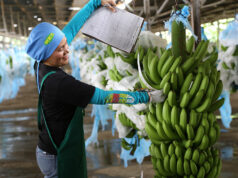THE Organisation for Economic Cooperation and Development (OECD) said it found an improved policy environment for Small and Medium Enterprises (SMEs) in Southeast Asia since its last survey in 2014, particularly in terms of e-commerce access.
The OECD’s SME Policy Index: ASEAN 2018, published over the weekend, said the prioritization of the sector comes as incomes rise and trade barriers fall, opening up opportunities for SMEs producing goods and services.
“The report finds that most ASEAN countries are active in the area of SME policy and apply a mix of horizontal and targeted approaches. On the horizontal side, they tend to prioritize measures to cut red tape and streamline business registration. On the targeted side, they tend to focus on measures to enhance productivity and increase access to finance,” The OECD said in the report’s executive summary.
Carried out between July 2016 and October 2017, the OECD report covers SME productivity, technology and innovation; environmental policy; access to finance; access to markets and internationalization; institutional frameworks; legislation, regulation and tax; entrepreneurial education and skills; and social enterprises and inclusive SMEs.
On a scale of 1 to 6, the region scored highest in measures to enhance access to markets and internationalization at 4.55; promotion of entrepreneurial education and skills at 4.27; and institutional framework at 4.20.
It cited Singapore and Malaysia as having “an advanced stage of policy development in a significant number of policy areas, with policies adhering to international best practices.
Meanwhile, Indonesia,Thailand and the Philippines were tagged as “mid-level performers in most policy areas.”
“This indicates that their SME policy is well-elaborated and adequately implemented, though some limitations remain, often in monitoring and evaluation,” the report said.
On the other hand, Brunei Daruasalam and Vietnam are still considered relatively new to SME policy.
The Philippines scored best at 4.44 in the institutional framework category and worst at 3.36 on legislation due to regulation and taxes.
“Company registration is still rather burdensome in the Philippines. Further steps could be taken to streamline registration requirements among different government agencies. This could facilitate the creation of a single registration number to operate a business or at least reduce the number of registration numbers required,” it said.
The report also recommends removing the mandatory lending requirement which seems to “prevent banks from efficiently allocating credit.”
It added that the needs to Philippines enhance and improve international market access while boosting adoption of new technology.
“The Philippines has traditionally adopted a service delivery approach to SME policy providing services to help SMEs increase their competitiveness,” the report said.
“However, the country also pursues a secondary objective, which sees SME policy as a tool to decrease poverty and regional inequalities as part of its goal of building a predominantly middle class society by 2040,” it added.
The report noted that the private sector participation in SMEs is “relatively robust.” However, firms are hindered by “lack of infrastructure, rather weak institutions and relatively burdensome tax rates and regulations.
It added that government bureaucracy and graft and corruption remain commonplace particularly in the procurement.
In 2016, the Philippines had 915,726 registered enterprises. Of these, 89.6% were classified as micro-sized, 5% small and 4% medium, and 0.4% large.
SMEs accounted for 63.3% of employment and 36% of GDP that year. — Janina C. Lim



